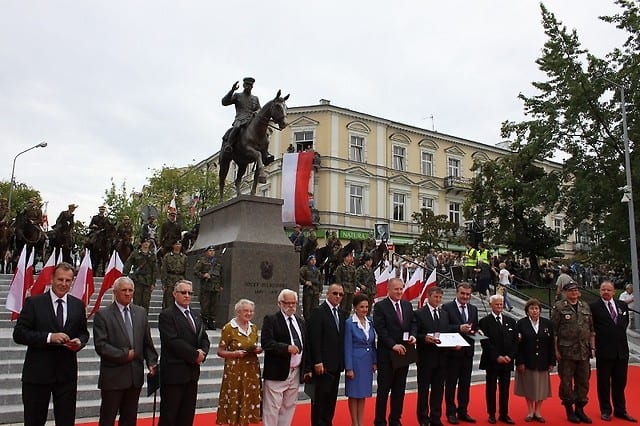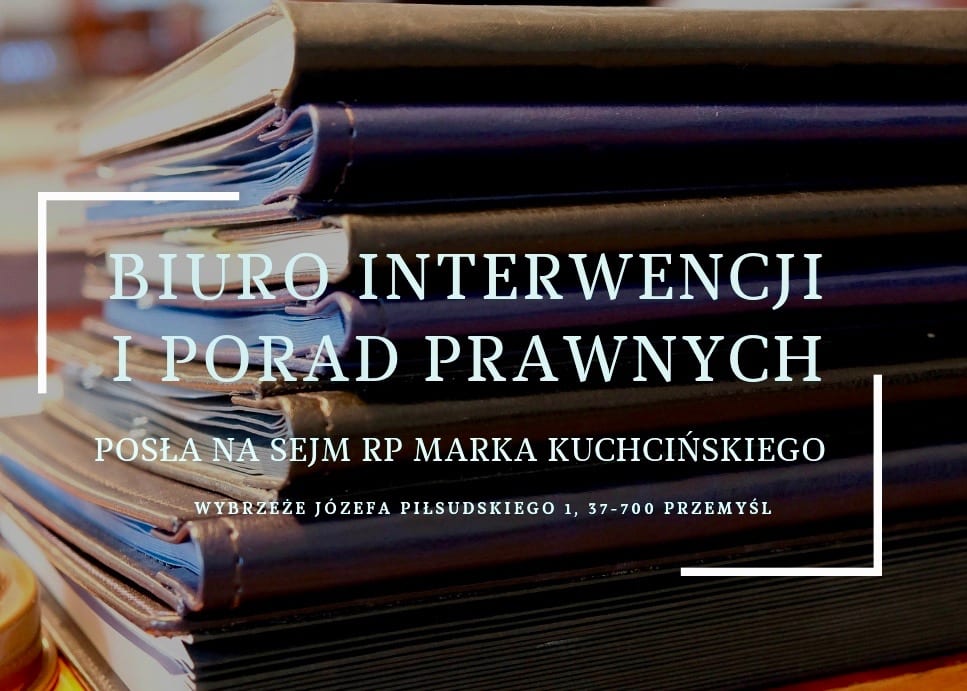 The unveiling of the monument of Marshal Jozef Pilsudski was the main point of Tuesday's final of the 49th March on the Trail of the 1st Cadre Company in Kielce. In this way the 100th anniversary of entering the city by riflemen was commemorated.
The unveiling of the monument of Marshal Jozef Pilsudski was the main point of Tuesday's final of the 49th March on the Trail of the 1st Cadre Company in Kielce. In this way the 100th anniversary of entering the city by riflemen was commemorated.
Nearly 700 infantrymen in green uniforms covered the 160-kilometer route from Krakow's Oleandrów - the site of the shooters' historic rally - to Kielce over the course of a week to commemorate Jozef Pilsudski's subordinates who in 1914 made Kielce the first capital of a reborn Polish state.
The participants were welcomed at Freedom Square in Kielce by the wife of the last president in exile, Karolina Kaczorowska, who holds honorary patronage of the march. In her opinion the walkers overcame the hardships of the march and proved that their patriotism is not only words but also deeds. - Continue to be in your daily lives ambassadors of the glorious deeds of our fathers and grandfathers. May your everyday actions be for everyone you meet in life a model of how to put into practice the age-old Polish motto: love of God, honor and country" - she emphasized.
Commander of the march Jan Jozef Kasprzyk recalled Pilsudski's memories of the summer of 1914. "Although we were lonely, that there were only a handful of us, we wanted to prove ourselves worthy of the great Polish past. Those marching this year wanted to prove that they also wanted to be worthy of the great Polish past, that they wanted to be worthy heirs of the independence tradition," said the Commander.
This year's 1st Cadre Company March was attended by, among others, young people from the "Strzelec" Riflemen's Association, scouts, students from schools named after Jozef Pilsudski, soldiers from the Polish Army units with legion traditions, and cavalrymen from associations cultivating Polish cavalry traditions. The oldest participant was 94 years old, the youngest was two years old.
Commemorative engraving of the centenary of the Deed of Independence were given by Kasprzyk to President Kaczorowska and the Jasna Góra chaplain of the Soldiers of Independence, Father Eustachy Rakoczy. The President of Kielce Wojciech Lubawski was honoured with a replica of Polish Legion sabre. Lubawski reminded in his speech that the legionnaires were welcomed in Kielce on 12 August 1914 with "enthusiasm, singing and flowers". - Marshal Józef Piłsudski was grateful to the people of Kielce for that day. He repeatedly spoke of his love for Kielce. He proudly accepted the honorary citizenship of our city in 1921," added the President.
To commemorate the 100th anniversary of the entry of the Cadre, a monument of the Marshal was erected in Kielce. The monument was unveiled by President Kaczorowska, Vice-Marshal of the Sejm Marek Kuchciński, Director of the Jozef Pilsudski Museum in Sulejówek, Marshal's grandson Krzysztof Jaraczewski and the Mayor of Kielce. The statue shows Piłsudski on horseback, wearing a shooting uniform and a maciejówka cap on his head. The statue is made of bronze and the pedestal of the monument is made of red Volhynian granite. The stone elements of the pedestal were funded by the Confederation of Poles of Podolia from Vinnitsa in Ukraine - partner city of Kielce. The author of the project is sculptor Pawel Pietrusinski. The monument stood on the steps of Liberty Square. After Pilsudski's death in 1935, city residents gathered in the square to pay tribute to the Marshal - a symbolic coffin stood on the steps.
At the foot of the pedestal of the monument an urn with soil from places important to the history of Poland was placed, including: the sites of battles during the Kosciuszko, November and January Uprisings, places associated with the life and work of Pilsudski (including Zulow, Lithuania, where he was born), Westerplatte, Katyn, Charkow, Miednoje, Monte Cassino, the quarters of the Warsaw insurgents and the Smolensk crash site.
The monument was created on the initiative of the Civic Committee for the Construction of the Monument of Marshal Józef Piłsudski in Kielce. The Association raised about 450 thousand zlotys for this purpose through public collections and the sale of bricks. The initiative was supported by Kielce inhabitants, local entrepreneurs and public institutions. Chairman of the committee Janusz Koza said that Marshal Pilsudski returned today to "his city" where - as he often said in his memoirs - "everything began". - We want to ensure that today we listen to the Marshal's voice just as our ancestors did in 1914. This voice captivated and still captivates new generations, gave hope, strength, faith in victory (...)- said Koza.
A company called "Kadrówka", which consisted of 160 soldiers from units of the Riflemen's Association and Riflemen's Squads subordinate to Jozef Pilsudski, set out from Krakow to the lands of the Russian partition on the night of August 5-6, 1914. Although the march of the Cadre Company was a small episode in military terms, according to historians, it had a political significance, marking the existence of the "Polish cause" since the beginning of WWI.
According to the recollections of some soldiers, the people of Kielce initially welcomed the shooters. However Polish units quickly withdrew from Kielce, after counterattack of Russians. The Russians imposed a high contribution on townsmen, and threatened to bombard the city, so when the shooters reoccupied Kielce in the second half of August, they were not enthusiastically welcomed.
The headquarters of Piłsudski and his staff was the former Cracow Bishops' Palace in Kielce. It housed: Commissariat of the Polish Army, recruitment offices (almost a thousand volunteers had signed up), the printing office and editorial office of the "Official Journal of the Commissariat of the Polish Army", the field post office, the pass office and the intendant's office. The Pilsudski Riflemen were stationed in Kielce until September 10, 1914. The people of Kielce tried to help the soldiers - collections of money were organized and women associated in the Women's League organized, among other things, a laundry and a sewing room to meet the needs of the soldiers.
"Kadrówka" gave rise to the Polish Legions, which with their armed efforts during the First World War contributed to the regaining of independence in 1918.
The first rifle team march from Krakow to Kielce was organized in 1924. Before the war there were 15 marches. During the communist era there were no marches for decades. The tradition was resurrected in 1981, maintaining the continuity of the numbering. Until 1989, the March had the character of a patriotic manifestation. After 1989, it returned to its pre-war formula. It is a sports and defence competition, combined with a rich educational programme. The march is organized by the Pilsudczycy Association in cooperation with the City of Cracow and Kielce City Hall.
Article source: PAP
photo comes from um.kielce.pl


